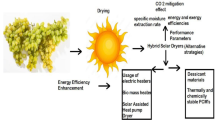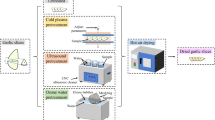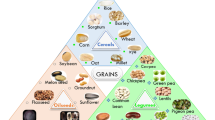Abstract
Following high temperature (HT) drying, final steaming in a pressurised environment will reduce twist degrade and enhance stability when compared to normal steaming. This improvement is the result of the enhanced relaxation of drying stresses in the hotter, pressurised environment. However, the precise mechanisms for this improvement are, as yet, unclear. A study was undertaken to evaluate the patterns of moisture uptake during pressure steaming of HT dried radiata pine lumber. Samples of radiata pine heartwood and sapwood, which had been previously high-temperature dried at 140/90°C, were pressure steamed for 15 minutes at target conditions of 150°C and 95% relative humidity (4.6 bar). Specimens rapidly attained moisture levels considerably higher than what would have been predicted by commonly applied equilibrium moisture content (EMC) relationships. Marked differences in the sorption patterns of heartwood and sapwood were also evident.
Zusammenfassung
Eine abschließende Druckdampfbehandlung welche anschließend an eine Hochtemperaturtrocknung durchgeführt wird, reduziert im Vergleich zu einer normalen Dampfbehandlung die Abwertung des Holzes durch Verdrehung, und erhöht die Dimensionsstabilität des Holzes. Diese Verbesserung beruht auf einer erhöhten Relaxation der Trocknungsspannungen in einer heisseren und unter Druck stehenden Umgebung. Der genaue Mechanismus für diese Verbesserung ist jedoch bis jetzt noch unklar. Eine Studie wurde durchgeführt, in welcher das Verhaltensmuster der Feuchtigkeitsaufnahme während der Druckbehandlung von hochtemperaturgetrocknetem Pinus radiata Holz untersucht wurde. Proben von Kern- und Splintholz, welche zuvor bei 140°/90°C getrocknet worden waren, wurden für 15 Minuten mit Druckdampf behandelt, wobei Sollwerte von 150°C und 95% relativer Feuchte (4,6 bar) angestrebt wurden. Die Proben nahmen dabei schnell deutlich höhere Feuchtigkeitswerte an, als von den üblich angewendeten Formeln zum Feuchtigkeitsgleichgewicht vorhergesagt worden wäre. Zudem traten herausstechende Unterschiede im Sorptionsverhalten von Kern- und Splintholz zutage.


Similar content being viewed by others
References
Dwianto W, Morooka T, Norimoto M, Kitajima T (1999) Stress relaxation of Sugi (Cryptomeria japonica D.Don) wood in radial compression. Holzforschung 53(5):541–546
Engelhardt F (1979) Investigations on the sorption of water vapour by beech at temperatures ranging from 110 to 170°C. Holz Roh- Werkstoff 37(3):99–112
Garcia LH, Pilosof AMR (2000) Kinetics of water sorption in okara and its relationship to the glass transition temperature. Drying Tech 18(9):2105–2116
Hahn RA (1966) Theoretical considerations in the drying of wood at pressures above atmospheric. For Prod J 16(4):25–32
Haslett AN, Bates RP (1997) Pressurised final steam conditioning. For Prod J 47(10):64–68
Haslett AN, Davy B, Dakin M, Walford B (1999) Effect of pressure drying and pressure steaming on warp and stiffness of radiata pine lumber. For Prod J 49(6):67–71
Haslett AN, Dakin M (2001) Effect of pressure steaming on twist and stability of radiata pine lumber. For Prod J 51(12)
Jeffries R (1960) The sorption of water by cellulose and eight other textile polymers, part III The sorption of water vapor by textile polymers at 120°C and 150°C. J Text Inst 51(11):T441
Kelly SS, Rials TG, Glasser WG (1987) Relaxation behavior of the amorphous components of wood. J Mat Sci 22:617–624
Kininmonth JA, Whitehouse LJ (eds) (1991) Properties and uses of New Zealand radiata pine. Volume One—Wood properties. Forest Research Institute, Rotorua, New Zealand
Lenth CA, Kamke FA (2001a) Equilibrium moisture content of wood in high temperature pressurized environments. Wood and Fiber Sci 33(1):104–118
Lenth CA, Kamke FA (2001b) Moisture dependent softening behavior of wood. Wood and Fiber Sci 33(3):492–507
Lutz JF (1974) Drying of veneer to a controlled moisture content by hot-pressing and steaming. USDA For Ser Res Pap FPL227 For Prod Lab, Madison, WI
Pang S (2000) Modelling of stress development during drying and relief during steaming in Pinus radiata lumber. Dry Tech 18(8):1677–1696
Resch H, Hoag ML, Rosen HN (1988) Desorption of yellow poplar in superheated steam. For Prod J 38(3):13–18
Siau JF (1971) Flow in wood. Syracuse University Press, Syracuse, NY
Siau JF (1984) Transport processes in wood. Springer, New York Berlin Heidelberg
Siau JF (1995) Wood: influence of moisture on physical properties. Dep Wood Sci and For Prod, Blacksburg, VA
Skaar C (1972) Water in wood. Syracuse University Press, Syracuse, NY
Skaar C (1988) Wood-water relations. Springer, New York Berlin Heidelberg
Strickler MD (1968) High temperature moisture relations of grand fir. For Prod J 18(4):69–75
Urquhart AR, Williams AM (1924) The moisture relations of cotton: the effect of temperature on the absorption of water by soda-boiled cotton. J Text Inst 15:T 559
Wolcott MP, Kamke FA, Dillard DA (1994) Fundamental aspects of wood deformation pertaining to manufacture of wood-based composites. Wood and Fiber Sci 26(4):496–511
Wu Q, Milota MR (1996) Mechano-sorptive deformation of Douglas-Fir specimens under tangential tensile stress during moisture adsorption. Wood and Fiber Sci 28(1):128–132
Author information
Authors and Affiliations
Corresponding author
Additional information
The authors would like to acknowledge the contribution of Dr. F.A. Kamke and the Wood Science and Forest Products Dept. at Virginia Tech, Blacksburg, Virginia for their assistance in facilitating this work. The input of drying scientists Shusheng Pang and Steve Riley at Forest Research was also invaluable.
Rights and permissions
About this article
Cite this article
Lenth, C.A., Haslett, A.N. Moisture uptake patterns in pressure steaming of Radiata Pine. Holz Roh Werkst 61, 444–448 (2003). https://doi.org/10.1007/s00107-003-0419-0
Published:
Issue Date:
DOI: https://doi.org/10.1007/s00107-003-0419-0




